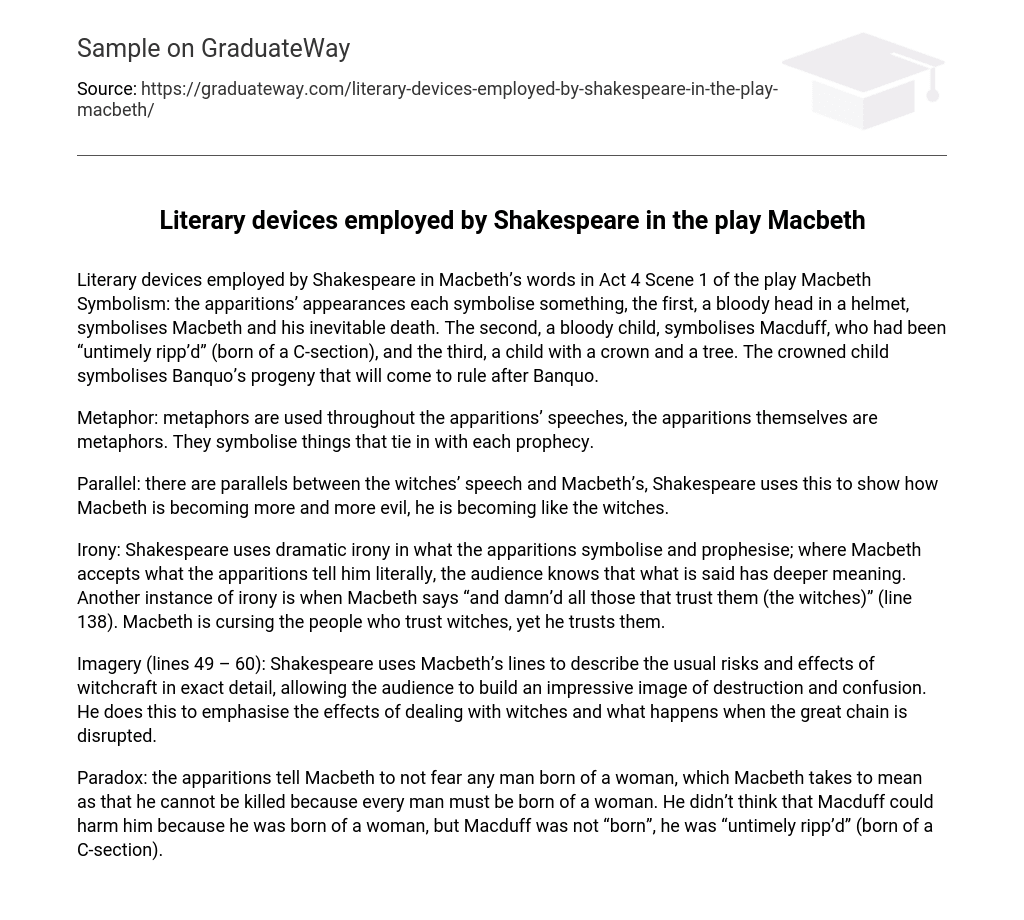Literary devices employed by Shakespeare in Macbeth’s words in Act 4 Scene 1 of the play Macbeth Symbolism: the apparitions’ appearances each symbolise something, the first, a bloody head in a helmet, symbolises Macbeth and his inevitable death. The second, a bloody child, symbolises Macduff, who had been “untimely ripp’d” (born of a C-section), and the third, a child with a crown and a tree. The crowned child symbolises Banquo’s progeny that will come to rule after Banquo.
Metaphor: metaphors are used throughout the apparitions’ speeches, the apparitions themselves are metaphors. They symbolise things that tie in with each prophecy.
Parallel: there are parallels between the witches’ speech and Macbeth’s, Shakespeare uses this to show how Macbeth is becoming more and more evil, he is becoming like the witches.
Irony: Shakespeare uses dramatic irony in what the apparitions symbolise and prophesise; where Macbeth accepts what the apparitions tell him literally, the audience knows that what is said has deeper meaning. Another instance of irony is when Macbeth says “and damn’d all those that trust them (the witches)” (line 138). Macbeth is cursing the people who trust witches, yet he trusts them.
Imagery (lines 49 – 60): Shakespeare uses Macbeth’s lines to describe the usual risks and effects of witchcraft in exact detail, allowing the audience to build an impressive image of destruction and confusion. He does this to emphasise the effects of dealing with witches and what happens when the great chain is disrupted.
Paradox: the apparitions tell Macbeth to not fear any man born of a woman, which Macbeth takes to mean as that he cannot be killed because every man must be born of a woman. He didn’t think that Macduff could harm him because he was born of a woman, but Macduff was not “born”, he was “untimely ripp’d” (born of a C-section).





